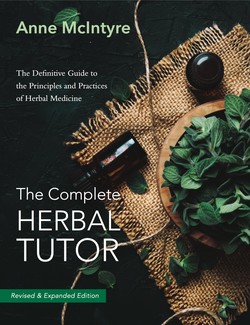Читать книгу The Complete Herbal Tutor - Anne Mcintyre - Страница 34
ОглавлениеPreparing Herbs
Collecting wild herbs or growing them in your garden and harvesting them for making medicines can be very rewarding and uplifting. For those who do not have access to fresh plants, dried herbs are available from many suppliers. Try to use organic herbs as pesticides may disrupt the therapeutic effect of your remedies or cause adverse reactions.
Herbs can be prepared as medicines in a variety of ways. What is important is that they are absorbed into the body so that they can exert their benefit. When internal preparations are swallowed, they pass through the digestive tract and into the bloodstream. Many people are unconsciously taking herbal remedies in their food on a daily basis, for not only do all the culinary herbs and spices add flavour to our diet, but also they contain volatile oils that have digestive and antimicrobial effects among many other benefits. As foods are absorbed from the digestive tract, so the therapeutic constituents of the herbs enter the bloodstream and then circulate around the body.
When used externally, herbs can be applied to the skin as in an aromatherapy massage or when we rub a dock leaf on to a nettle sting. They can also be used in herbal baths, compresses and poultices. Once in contact with the skin, they are absorbed into tiny capillaries under the surface and then circulated round the body. The conjunctiva of the eye also absorbs herbal preparations. A chamomile eyebath or a marigold compress will relieve sore and inflamed eyes. Inhalations are another very good therapeutic pathway and one that is utilised by aromatherapists. By inhalation into the nose which is lined with nerve endings, the messages from the herbs are carried directly to the brain and also to the lungs, where they are absorbed with oxygen into the bloodstream and circulated throughout the body.
Grinding herbs ready for use.
